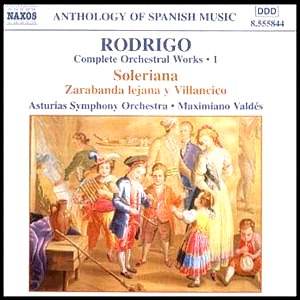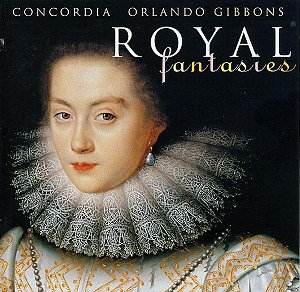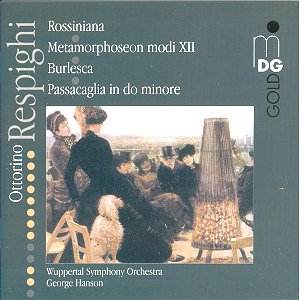 Composer: Joaquín Rodrigo
Composer: Joaquín Rodrigo
Works: Soleriana: Suite para orquesta (1953), Zarabanda lejana y Villancico (1930), Cinco Piezas Infantiles (1925)
Performers: Asturias Symphony Orchestra conducted by Maximiano Valdés
Recording: DDD Stereo
Label: NAXOS 8.555844 [60:56]
The legacy of Joaquín Rodrigo often pivots around his two masterpieces, the Concierto de Aranjuez and the Fantasia para un gentilhombre, leaving many lesser-known works in the shadows of his fame. Naxos’s release of Rodrigo’s complete orchestral works, featuring the Asturias Symphony Orchestra under the direction of Maximiano Valdés, serves both as a commendable exploration of his broader oeuvre and as a reminder of the complexities inherent in his musical language. This recording features a selection of dance suites and programmatic pieces, each reflecting different facets of Rodrigo’s style and his interactions with various musical movements throughout his career.
The disc opens with the Zarabanda lejana y Villancico, a suite originally composed for guitar and later arranged for string orchestra. The first movement, a serene sarabande, evokes a sense of nostalgia, beautifully rendered here by the strings. However, the orchestral sound lacks the richness that one might expect; the strings occasionally come off as thin, which affects the overall warmth of the piece. The lively rondo that follows reveals Rodrigo’s gift for melody, yet the performance struggles to convey the exuberance of the dance. Here, the ensemble displays commendable precision, but the vitality of the music often feels curtailed by a lack of dynamic contrast.
Moving on to the Cinco Piezas Infantiles, the musical language takes on a more imaginative character, reflective of Rodrigo’s formative encounters with avant-garde composers in Madrid. These pieces are distinctly more vibrant and inventive, particularly the movement titled Después de un cuento. In this segment, Rodrigo conjures a dreamlike atmosphere that is both enchanting and complex, revealing his capacity for creating nuanced soundscapes. The Asturias strings shine in this movement, as Valdés draws forth a variety of colors, though the overall execution still suggests an opportunity for greater expressiveness. The juxtaposition of simplicity and whimsy in these children’s pieces showcases Rodrigo’s ability to blend innocence with sophistication.
The centerpiece of the recording, Soleriana, is an eight-movement suite inspired by the works of Padre Antonio Soler. While Rodrigo’s orchestration offers moments of charm, it often lacks the imaginative flair found in Soler’s original compositions. Valdés directs a performance that is pleasant but falls short of the vividness and originality that one might anticipate, especially when compared to the orchestrational brilliance of Respighi. There is a delightful tunefulness throughout Soleriana, yet the material does not leave a lasting impression, failing to generate the kind of emotional engagement seen in Rodrigo’s more celebrated works.
The sound quality of the recording is generally satisfactory, with clear delineation between the instrumental lines, but at times the overall balance seems skewed, particularly in the string section. There is an evident effort to maintain clarity in the orchestral texture, yet the result occasionally feels restrained, lacking the lushness that might have elevated these performances. Comparatively, other recordings of Rodrigo’s orchestral works, while perhaps not as comprehensive, often manage to capture a more vivid sense of rhythm and color.
The liner notes provide a blend of intriguing historical context and somewhat convoluted commentary that may leave listeners puzzled rather than enlightened. The visual presentation, too, seems disconnected from the music itself, with artwork that fails to resonate with the themes explored in the compositions. Despite these shortcomings in presentation, the recording still offers a valuable glimpse into Rodrigo’s lesser-known works.
Rodrigo’s journey as a composer is marked by a tension between his celebrated masterpieces and the more obscure corners of his catalog. This recording, while illuminating some of the lesser-known aspects of his repertoire, ultimately raises further questions about his artistic depth beyond the iconic Concierto de Aranjuez. The Asturias Symphony Orchestra’s performances are competent but do not quite capture the essence of Rodrigo’s unique voice, leaving one to wonder about the potential of these works in more inspired hands. While this disc may not be the definitive exploration of Rodrigo’s orchestral landscape, it is an interesting, if modest, contribution to understanding the composer’s broader artistic legacy.



